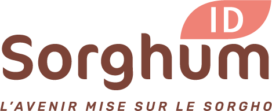Nitrosorg: a Sorghum-focused Cooperation Project

The objectives of the Nitrosorg cooperation project have been clear from the onset: to improve sorghum hybrids by maximizing their quality (especially in terms of protein content, protein digestibility, and protein adaptation to poultry nutrition) and to share the acquired knowledge with breeders.

During the Steering Committee meeting recently held by Sorghum ID, Nancy Terrier – researcher with INRAE – presented the Nitrosorg project, which she co-ordinates alongside David Pot (CIRAD). In her view, sorghum (whose areas should increase, given the climate change context) could become an important source of protein. To improve the digestible protein content of the cereal, research has turned to the development of a better hybrid range. Nitrosorg intends to explore the reasons why sorghum proteins have low digestibility. To this end, it will set up three research groups, whose mission will be to gain a better understanding of the mechanisms at work and to provide their seed production partners with large-scale phenotyping and prediction tools.
This is a sizeable endeavour, which will bring together a large number of partners for a period of three years – and which has already aroused enthusiasm among sorghum industry actors.
Three Working Groups

Group #1 focuses on the cereal productions coming from different sorghum genotypes (commercial offer, global diversity, breeding programmes).
Group #2 deals with the development of cereal quality characterisation and prediction tools, through purchases and development of NIRS calibration[1], standardisation of partner field trials, data collection on cereal quality, genotype analyses, development of genome calibrations that help predict cereal quality, as well as using phenomic selection, to optimise breeding.
Once groups 1 and 2 finish their work, group 3 selects and analyses five genotypes. Its purpose is to understand the factors influencing protein digestibility, by carrying out in vitro and in vivo experiments during poultry feeding.
There is also a fourth activity, which focuses on coordinating and harnessing the work that has been carried out.
Based on the work done by groups #1 and #2, group #3 selects and analyses five genotypes.
Initiated in January 2022 and benefitting from CASDAR funding, this long-term research project is scheduled to end on June 30th, 2025. Its results will help experts to select the hybrids with higher content and digestibility of proteins and grains, and thus ensure a better nutritional value of the cereal on the feed markets.
[1] Near-infrared spectroscopy
The partners to the project include: UMR AGAP, IATE, BOA, PEAT, ITAVI, Eurosorgho, and RAGT2N.

Continue ?
Ukraine War Consequences for 2022 European Sorghum Areas

Variety Breeding: a Launching Pad for Sorghum












